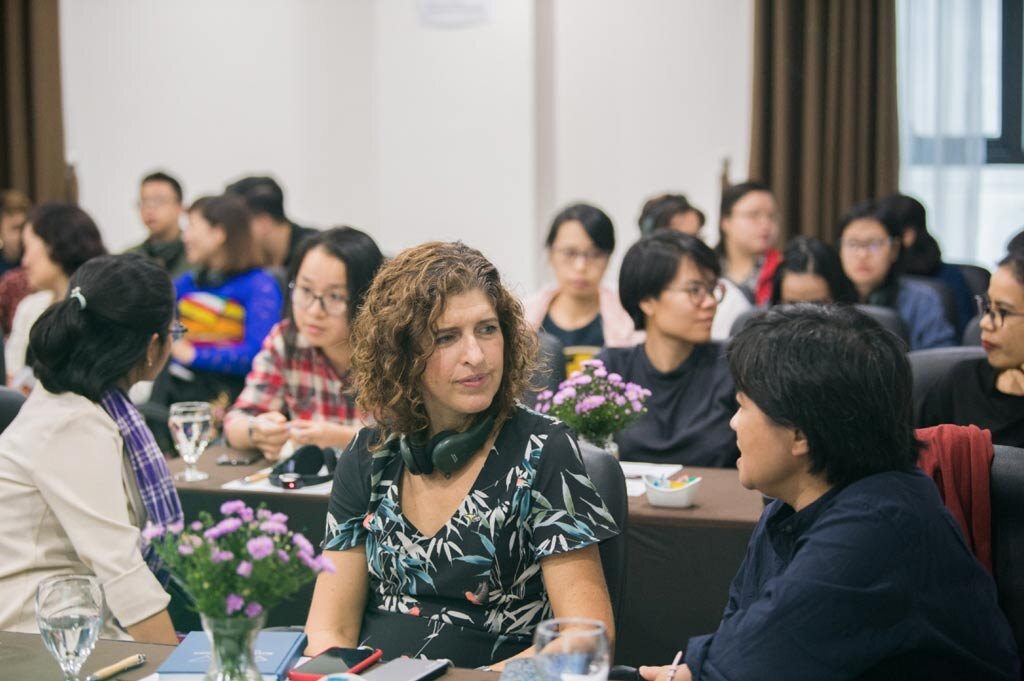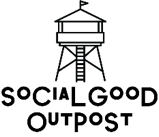How To Tell Stories About Social Impact: Learning From Gender Month In Vietnam
There are some stories, whether from childhood, or from close friends or even outrageous colleagues, that will always stick with you. Was it the topic? Or the way it was told? Or was it just the person, who had a knack for hooking you in? In any case, there are some stories that leave you ticking over a problem or idea for days afterwards. This is just what I found on my most recent leg of a social impact tour through the ASEAN region, and something I think is crucial for all social change agents to consider.
Two weeks ago, I woke up in Vietnam. It was a Friday morning. It was 5am, and the sky had started to lighten through the smog of Hanoi city. It was the final day of a week that was packed with 13 events I’d been running with fellow social entrepreneur, Felicity Furey, as part of the Australian Government’s Australia now program. You’ve probably read about this before:
Through this series, we’re seeking to bring you the freshest insights and coverage of the Youth Entrepreneurs & Leaders Speaker Series, an initiative funded and supported by the Australian Government, curated and designed by Australian social enterprise Social Good Outpost.
But back to where I was – it was the end of what had so far been a very successful week. 120 per cent participation at a workshop on communicating social impact, a lecture hall full of cheering teenagers after our talk at Vietnam National University, and inspiring meetings with the likes of Australia’s Ambassador to Vietnam, Robyn Mudie, or Australian Consul-General, Julianne Cowley.
There was something about that Friday that my body must have known would be particularly important, however. A heavy chest and a tight stomach followed me, starting at our crack-of-dawn interview with Vietnam National Television VTV, where we spoke of Felicity’s next aim of creating a TV series of her learning to fly a fighter jet to inspire more women into engineering. Did I mention how amazing she is? In case you didn’t know, she’s the founder of two social enterprises, an AFR top 100 woman of influence and BOSS magazine chief executive of the year – and my incredible co-facilitator and speaker for the week, to boot.
My aches and pains followed me to the next session too. We talked about dealing with the unexpected with the team of Australian Volunteers that are currently based in Vietnam working across civil sector and government, and had lunch with a few, to cement what the next steps would be when it came to social change across Vietnam.
But it wasn’t till the afternoon that the feeling of heaviness really made sense. We were asked by an incredible non-governmental organisation, iSEE, to run a workshop with a cohort of organisations all aiming to change the narrative around victim-blaming, particularly for domestic violence survivors, in Vietnam. Heavy topic? Yes, but it wasn’t just that.
Having worked with vulnerable and traumatised cohorts before, across all kinds of topics such as LGBTI+ empowerment, gender-based violence prevention, and more, I was prepared and determined to ensure this group got the maximum amount of impact from the workshop.
What I wasn’t prepared for, was the stories that flowed after Felicity and I finished our usual workshop on communicating for social change. I should have been, given that I had been preaching the art of storytelling as being the catalyst for social change all week. But it was the story of one particular woman that really left me impacted, and reminded of why I was here in Vietnam.
In beautiful blue and red traditional dress, this woman had been sitting quietly all afternoon by the time she brought her story to us. The clothes she proudly wore were part of her heritage, being from an ethnic minority community in central Vietnam. Despite the challenges she began to describe, it was evident that she sought desperately to retain cultural connection to her community whilst seeking culture change around some of the more damaging elements of gender inequality and violence.
What she wanted to talk about was firmly focused on the topic of the afternoon: she described victim-blaming as a real issue for her community. Changing social narratives around victim-blaming (the idea that violence is the fault of the ‘victim’ or survivor, rather than the fault of the perpetrator) was a difficult topic, particularly in her small, and very inter-connected community. The seemingly universal nature of the issue, across communities in Vietnam, Australia and beyond, was a core reason we planned to run the workshop in the first place.
What she shared brought silence to our group. She spoke clearly and bravely. She explained, in words no one should ever have to speak and words none of us had thought we would hear, how her sister had passed away only 27 days prior as a result of long-standing domestic violence. In death, her sister was blamed for bringing shame on the family and community.
When we had begun planning the workshops over a month earlier, this story had not yet happened. What she had advocated so hard against had now happened. It was crushing to hear of this reality now, and I know I was not the only one in the room who was struggling to hold back tears; whose heart was fighting to be brave when it sorely wanted to run away.
What struck me was the sheer impact that this story had on us. In the room of our workshop, you could feel each person stiffen, resolved that this must change. No longer was it a room full of activists and advocates discussing how they could communicate with their communities to create culture change. It was a room full of people who were already communicating; a group who were already changing because of stories.
As human beings, we love stories. In fact for most of our history, it is through stories that we have communicated, from parent to child, community to community, friend to foe. Stories are powerful because they can influence us in ways that mere facts and statistics can’t. Stories constitute our identities and our entire realities – influencing how we perceive ourselves, how we relate to others, and even how we spend our days.
Having been part of workshops on storytelling in the past however, I knew there was an arc that good stories must follow in order for them to have impact. Like this article, (1) you must spend time establishing the context and background (you can’t just drop someone in the middle of it). The tension, or emotion, comes next (2), and was something viscerally felt in that room that day (emotion, and vulnerability, helps us as human empathise and connect with others). But it is important that the story doesn’t end there.
You see, while emotions are critical for good story-telling (we are human after-all), if we leave with the wrong kind of emotions they can paralyse us, rather than inspire action.
In fact, if the first two parts of a story are dedicated to providing context and introducing tension, then (3) the final part of the story must provide emotional release (and therefore, the action step for what’s next).
Why? Fear may motivate humans most, but it doesn’t give us an action to take. That’s what the story ending has to do.
As a group, we felt newly united by this tragic story, bravely shared. But we were determined that it didn’t end there. We helped to write the ending of this particular story together. Felicity and I posed the question: what is one thing we had learned from the day? And what is one thing we can implement going forwards?
One woman summed up many of our feelings perfectly when she said, "I learnt there are other ways to get the message across. I can talk to a bigger and wider audience. I thought I was stuck using social media, which I find challenging to do because I have a disability, but I am not restricted to just social media to create change. I can use people's voices and sharing stories with each other to create change."
At the end of the week, I retired back to my hotel room, more exhausted than I had been that morning, and still with a residual tightness and tiredness in my chest. But the stories shared that day made me stop. They made me think, clearly. While I’ve always felt connected to this particular cause, there was no doubt that the stories shared lit fires within me, furious to make the change that these communities, our communities, need so direly.
No matter the issue you’re working on, or the impact you are seeking to make: the story you tell matters to the impact you can make.
Australia now is a public diplomacy program of the Australian Government, spearheaded by the Department of Foreign Affairs and Trade in a country or region of significance each year. The program celebrates Australia’s creative excellence, diversity and builds relationships for the future. This year, Australia now has a focus on youth, aiming to engage youth audiences and cement long-standing ties between Australia and surrounding member states of the Association of Southeast Asian Nations (ASEAN). Social Good Outpost has partnered with the Australian Government to deliver the Youth Entrepreneurs & Leaders Speaker Series across ASEAN in 2019 and 2020. Follow our events & updates at: www.socialgoodoutpost.com.au/Australia-now
We thank the generosity of the Australian Government for funding and supporting the Youth Entrepreneurs & Leaders Speaker Series.














